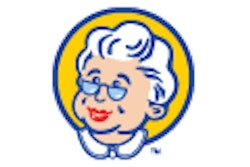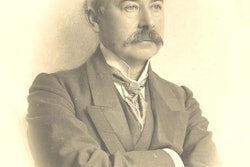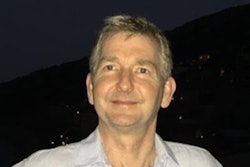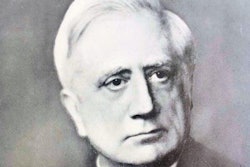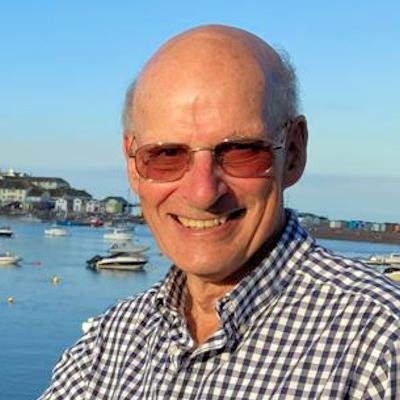
Dr. David Francis Charles Shepherd was a consultant interventional radiologist for over 30 years at the Royal Bournemouth and Christchurch Hospitals NHS Foundation Trust in the South of England.
He attended medical school at St Thomas' Hospital, where he met his future wife, Rose. He specialized in surgery, obtaining the FRCS qualification in 1974. The 1970s was a golden decade for radiology with the introduction of many advances, including CT scanning and modern interventional radiology.
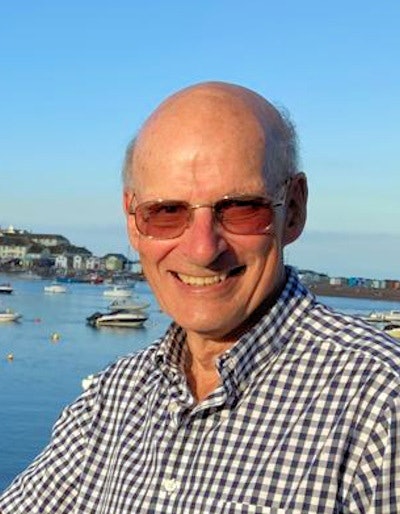 David Shepherd had a lifelong love of the water.
David Shepherd had a lifelong love of the water.David was inspired to enter radiology by John Garfield (1930-2019), a consultant neurosurgeon at the Wessex Neurological Centre at Southampton University Hospitals Trust. Garfield's aphorism was: "You can teach a monkey to operate, but you can't teach a monkey when not to operate," and he influenced David, telling him that "radiology was really moving."
David trained in radiology at Southampton obtaining his FRCR in 1979 and was able to maintain his surgical interests developing an expertize in colonoscopy. He was appointed as consultant radiologist to Bournemouth and Poole Hospitals. At Bournemouth, he again practiced colonoscopy, and he also developed the interventional radiology service.
He traveled to gain experience in interventional techniques and visited various departments, including London's Hammersmith Hospital, where he studied with the well-known interventional radiologist Dr. David Allison. His interventional practice at Bournemouth was wide in scope, including aortic stents, renal stone disease, colonic and esophageal stenting, and the treatment of strictures of the salivary ducts.
Professional boundaries are interesting. If a professional change is made, a surgeon does not cease being a surgeon when the role of radiologist is assumed. Indeed, professional boundaries are becoming increasingly blurred, and David's surgical experience seamlessly morphed into his interest in interventional radiology.
In 1990 he wrote an influential paper with colleagues from the University Surgical Unit at Southampton General Hospital, reviewing a series of 1,578 consecutive colonoscopies performed by radiologists in training.1
He argued that a role exists for the radiologist who wishes to "take a view through the colonoscope." He noted that such a radiologist is ideally placed to forge links between radiologists and gastroenterologists and to monitor the standard of the radiological examinations performed in radiology departments. I suppose that the main limiting factors for any one individual are those of time and experience, as well as knowing that everyone cannot do everything.
Out of Africa
David was born in Kenya, where his mother was a medical missionary and his father was an agriculturalist. He came to the U.K. when he was 10 and attended Canford School in Dorset. He took a Master of Arts degree at St John's College in Cambridge University, reading Natural Sciences.
At St. John's College, he was an active member of the Lady Margaret Boat Club (LMBC), the rowing club for college members. It was named after Lady Margaret Beaufort, who was the founder of St. John's. Of interest is that the term "blazer" originated from the red jackets that were worn by members of the LMBC.
David was secretary in the 1964/1965 season, and captain in 1965/1966. While he was captain, David was stroke of the 1st May VIII boat, and the LMBC won the Ladies’ Challenge Plate, which is one of the events at the world-famous Henley Royal Regatta held on the River Thames. The race is between crews of men's eight-oared boats, with David rowing 2 in that crew. At the same regatta an LMBC IV also won the Visitors’ Challenge Cup, and this was the first time that the LMBC had won both together since 1879.
 David Shepherd sailed from the South of England to Tromsø in Northern Norway, where he saw the Northern Lights. Photo courtesy of Tourist Office Tromsø.
David Shepherd sailed from the South of England to Tromsø in Northern Norway, where he saw the Northern Lights. Photo courtesy of Tourist Office Tromsø.He had a lifelong love of the water and had a share in a boat for 30 years. Bournemouth was an ideal coastal location for him. He took his boat for long cruises, including France, Sweden, and the Baltic Sea, particularly after his retirement in 2009.
He sailed up to the Arctic Circle, visiting as far north as Tromsø in Northern Norway. This was a significant voyage, requiring excellent seamanship.
David died on 20 December 2021, aged 77, following a short illness. He is survived by his wife, Rose, as well as his children and grandchildren. He is remembered with affection by many, and his memory remains fresh in his department in Bournemouth that he served so faithfully.
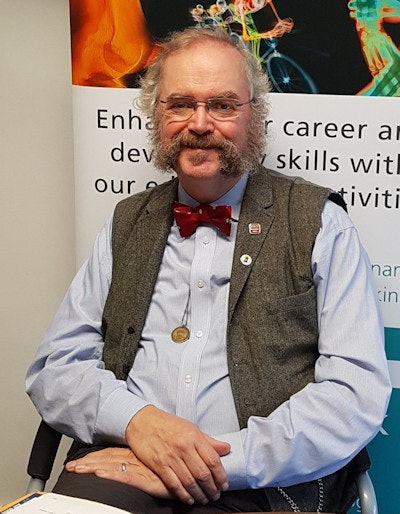 Dr. Adrian Thomas. Image courtesy of the BIR.
Dr. Adrian Thomas. Image courtesy of the BIR.Dr. Adrian Thomas is chairman of the International Society for the History of Radiology and honorary historian at the British Institute of Radiology.
The comments and observations expressed herein do not necessarily reflect the opinions of AuntMinnieEurope.com, nor should they be construed as an endorsement or admonishment of any particular vendor, analyst, industry consultant, or consulting group.
Reference
- Rawlinson, Tate, J.J., Shepherd, D.F.C., Royle, G.T., Bruton, F.J. (1990) Through the Colonoscope -- A Radiologist's View. Clinical Radiology, 41, 253-257.




